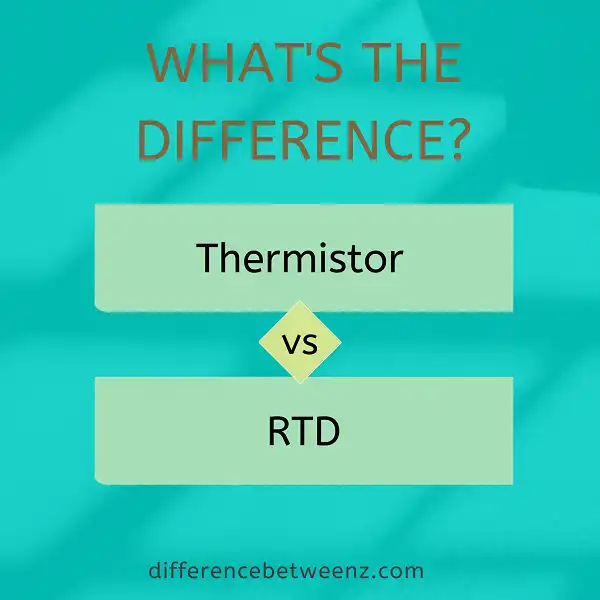There are many different types of temperature sensors on the market, but two of the most common are thermistors and RTDs. While both have their advantages and disadvantages, they are suited for different applications. In this blog post, we’ll take a look at the difference between thermistors and RTDs, and when each is most appropriate. Stay tuned!
What is Thermistor?
A thermistor is a type of resistor whose resistance is dependent on temperature, more so than other types of resistors. Thermistors are made from semiconductor materials such as nickel, cobalt, or manganese. The resistance of a thermistor decreases as the temperature increases. Thermistors are used in many applications such as temperature sensing and control in electronic devices. Thermistors can also be used to measure the human body temperature. Some thermistors can also be used as light-sensitive resistors in light-sensitive circuits. Thermistors can be manufactured with different shapes and sizes. The most common type of thermistor is the disk shape. Thermistors can also be found in other shapes such as rod, bead, and cantilever. Thermistors can also be found in different package types such as through-hole and surface-mount packages. Thermistors are used in many industries such as automotive, aerospace, computing, consumer electronics, and industrial automation. Thermistors are used in automobile engines to sense and control the engine temperature. Thermistors are also used in industrial automation to sense and control the process temperatures.
What is RTD?
RTD stands for Resistance Temperature Detectors. RTDs are sensors that measure the resistance of a material in order to determine its temperature. RTDs are made from a variety of materials, including metals, semiconductors, and conductive polymers. RTDs can be used to measure both high and low temperatures, making them ideal for many industrial applications. RTDs are also highly accurate and stable, making them preferred over other types of temperature sensors.
Difference between Thermistor and RTD
Thermistors and RTDs are both types of temperature sensors that are used in a variety of applications. Thermistors are made from semiconductor materials, while RTDs are made from metal wires. Thermistors have a higher sensitivity than RTDs, meaning that they can more accurately measure small changes in temperature. RTDs are more durable than thermistors and can withstand higher temperatures. Thermistors are typically less expensive than RTDs.
Conclusion
While thermistors and RTDs are both temperature sensors, they work in different ways. Thermistors rely on the electrical resistance of a material to measure temperature, while RTDs use the principle of resistance change with temperature. This difference means that RTDs are more accurate and can be used over a wider range of temperatures than thermistors. If you need a reliable and accurate temperature sensor for your next project, an RTD is the way to go.


